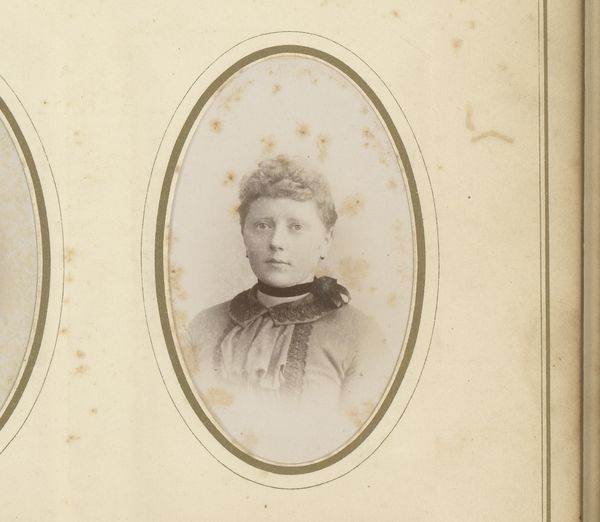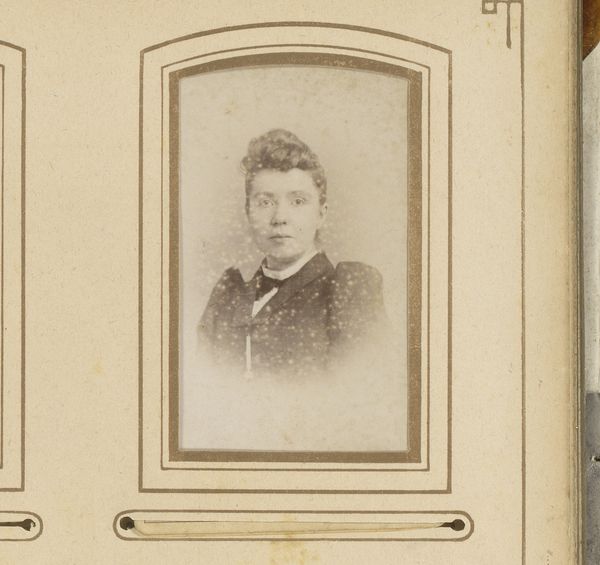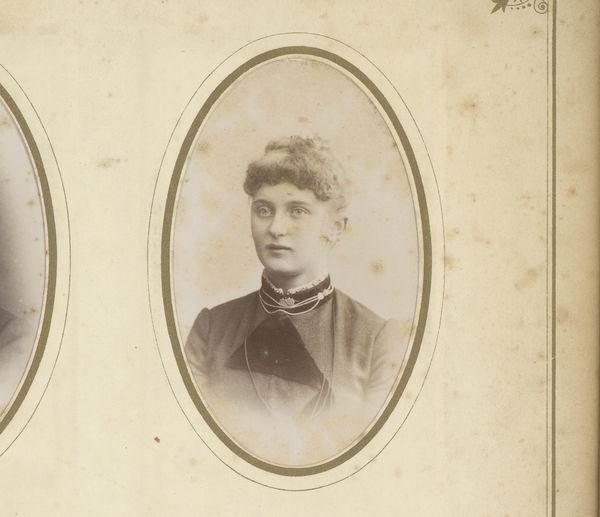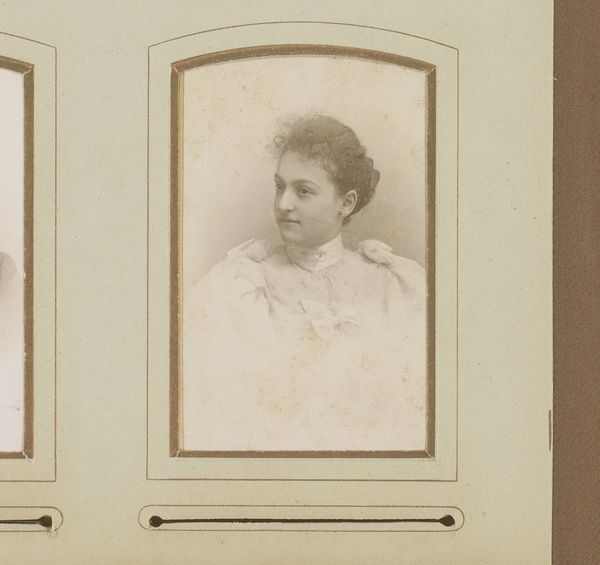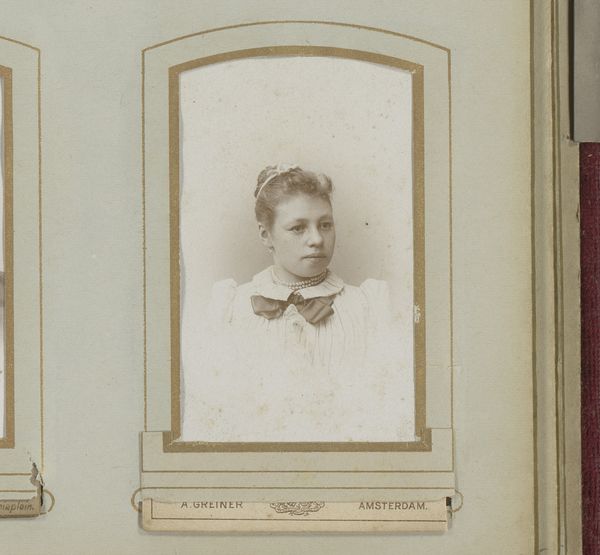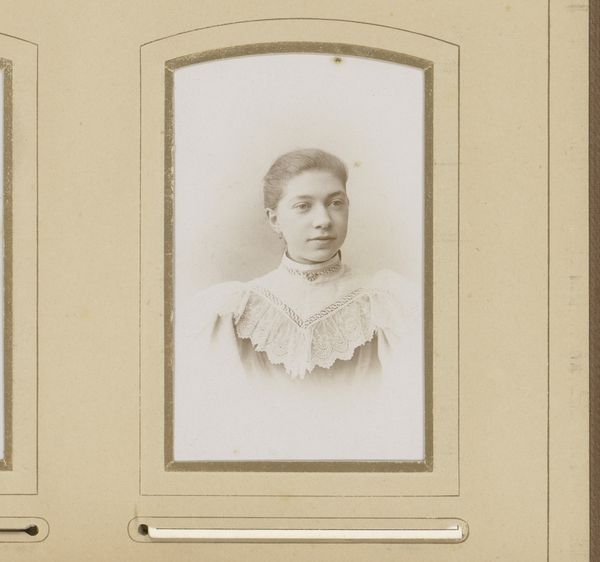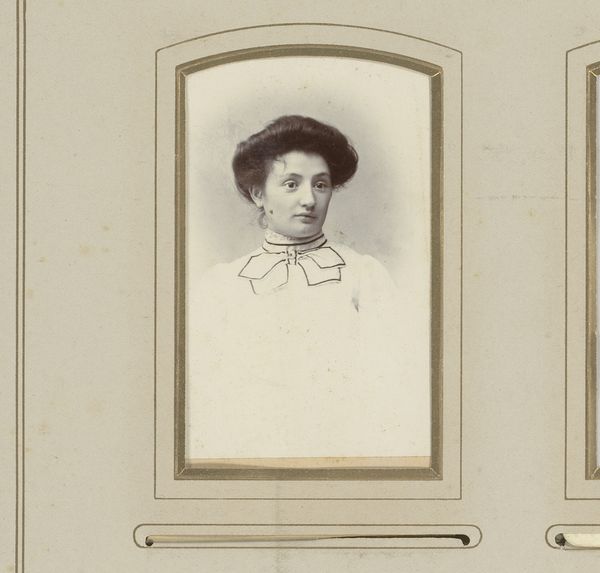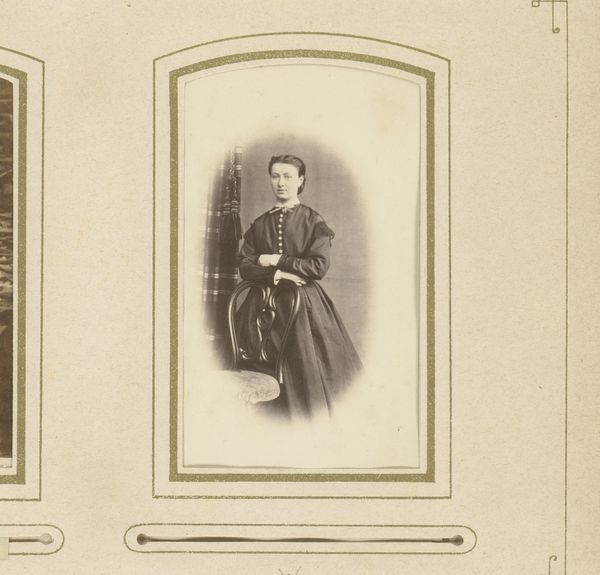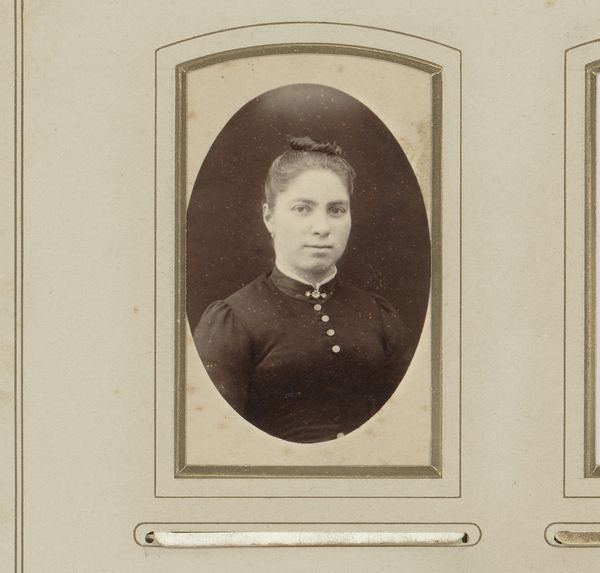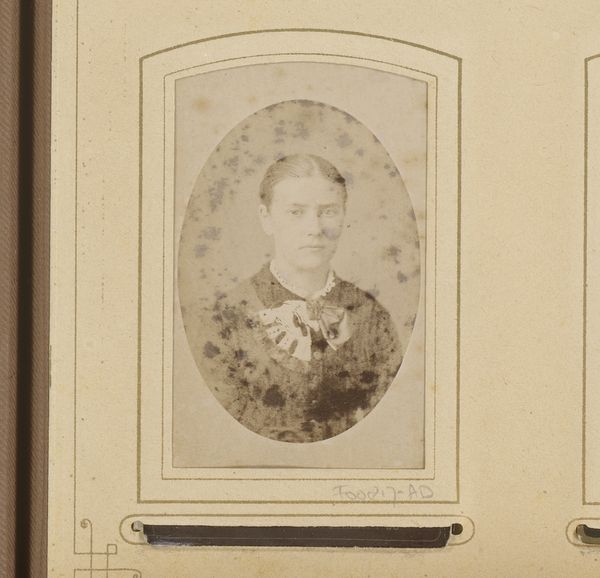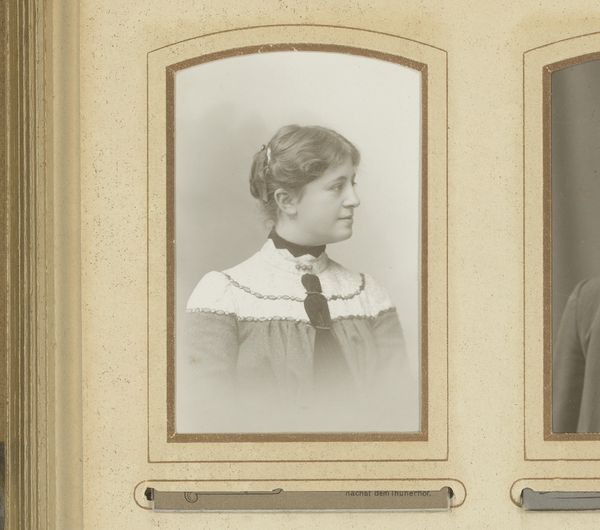
photography
#
portrait
#
pictorialism
#
photography
#
realism
Dimensions: height 84 mm, width 50 mm
Copyright: Rijks Museum: Open Domain
Editor: We’re looking at “Portret van een jonge vrouw” or “Portrait of a Young Woman” by J. Reverdy, a photograph from sometime between 1880 and 1920. It’s such a gentle image; there's a sense of formality but also intimacy. How do you interpret the role of photography in depicting women during this period? Curator: This portrait provides a window into the evolving social status of women. Photography in the late 19th and early 20th centuries became more accessible, offering a new means of representation beyond painting, particularly for the middle class. The subject's gaze, clothing, and posture – do they convey agency, or do they conform to societal expectations? Editor: I see what you mean. Her clothes and hairstyle feel very proper, almost restrictive. But her gaze is quite direct. Do you think the photographer, Reverdy, might have been making a statement about women’s roles? Curator: Perhaps, but it's important to consider the limitations and conventions of the time. Photography, even with its increasing accessibility, was still shaped by specific aesthetic and social norms. Consider the style—this looks like Pictorialism which employed soft focus and a painterly aesthetic. How might that aesthetic choice play into the narrative? Editor: That's interesting; the soft focus almost romanticizes her. So it could be a balancing act between conforming to ideals and hinting at individuality. It feels like there's so much context packed into one photo. Curator: Precisely. Understanding the historical context - the rise of photography as a democratic medium, coupled with evolving but still restrictive societal expectations for women – is crucial to unpack the layers of meaning in this portrait. Editor: This makes me think about the power dynamics inherent in portraiture, and how they shift with social change. Curator: Indeed, examining the intersection of art, society, and gender roles offers valuable insights. It transforms how we understand seemingly simple portraits.
Comments
No comments
Be the first to comment and join the conversation on the ultimate creative platform.


